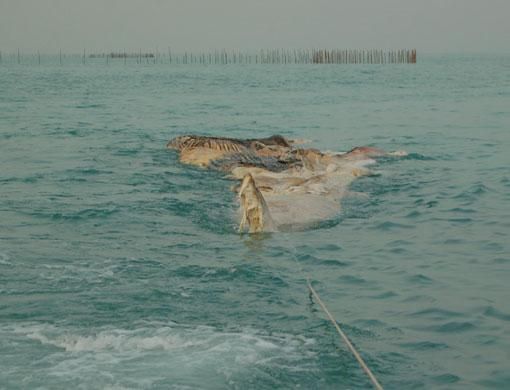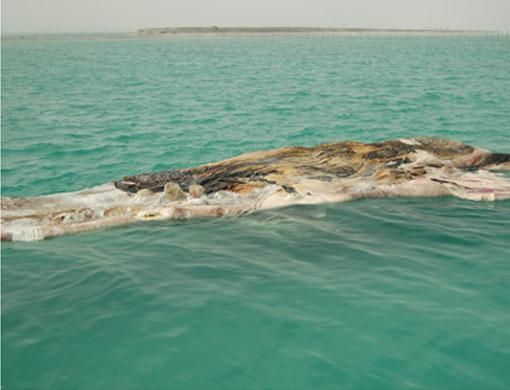Abu Dhabi: A dead whale, identified as Balaenoptera edeni, common name Bryde's whale was recovered by a combined team of Environment Agency- Abu Dhabi (EAD) and Critical National Infrastructure Authority personnel about four nautical miles west of Umm Al Dalkh oil field recently.
The whale, which measured about nine metres in length, was partially decomposed when found, indicating that it may have been dead for at least 4 to 5 weeks. "Upon closer examination, the fluke (or tail) was found to be lacerated probably by a large boat propeller and may have been the cause of death," Thabit Al Abdessalaam, Director of Biodiversity Sector- Marine Environment at EAD, said.
Some taxonomists think that there may be three to four distinctive forms of Bryde's whale populations.
In the waters off the Arabian Gulf, Gulf of Oman and Northern Arabian Sea, two forms or subspecies - an offshore and a coastal form are thought to exist. The coastal, inshore type is perhaps entirely resident.
This species, which is a baleen whale, belongs to the family Balaenopteridae together with Humpback whale and Blue whale. The species, which is also commonly known as Tropical whale reflecting its preference for tropical waters and warm temperate waters was given the common name, Bryde's whale in honor of Norwegian consul Johan Bryde, who built the first whaling factory in Durban, South Africa.
Although the species is included in IUCN Red List under the group of threatened species, its global population appears to be relatively stable.
Current estimates put the population of the species globally to be around 90,000. There is, however, a deficiency in terms of available data about the species at the local level in the UAE.
Bryde's whale attains a maximum length of 15.6 meters and weighs 20.3 tonnes with females being slightly larger than males. Females become sexually mature at 8 to 10 years of age. Males become sexually mature at the age of 9 to 13 years. The species probably mate throughout the year with females probably giving birth less than once every two years. Gestation lasts about one year.
Size at birth is 4.0 meters and the newly born weighs about one ton. Calves are weaned at about six months and approximately measure 7.1 m when they are weaned. The species is believed to breed in the region with observations of small calves 5-6 metres appearing to substantiate this fact.
Abu Dhabi environment team finds dead whale off the coast
Abu Dhabi environment team finds dead whale off the coast














